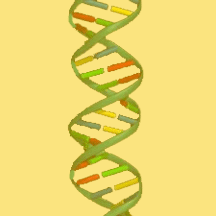 |
|||

|
The complete mapping and understanding of the human genome was one of the most ambitious endeavors undertaken by the scientific community. The Human Genome Project (HGP) was an international, 13-year effort, formally begun in October 1990. The project sought to sequence the 3 billion base pairs in the human genome, thus creating a complete map of human DNA. Sponsored by the National Human Genome Research Institute (NHGRI) and the United States Department of Energy (DOE), the project was predicted to last 15 years and cost $3 billion. Ultimately, the project's goals were met ahead of schedule and under budget when completed in April 2003 for $2.7 billion. While the project took place over a decade and around the globe, laboratories in Cambridge were among the most important in unlocking one of science's greatest mysteries. The Human Genome Project was completed with the help of laboratories around the world, but in the United States, three main locations became leading sequencing centers for the genome. These included the Baylor College of Medicine, Washington University in Saint Louis, and, perhaps most influential of all, the The Whitehead Institute/MIT Center for Genome Research in Cambridge, Mass. The work done at the Whitehead Institute and MIT Center for Genome Research was led by Dr. Eric Lander, currently a Professor of Biology at MIT, member of theWhiteheadInstitute, co-chair of PresidentBarackObama'sCouncilofAdvisorsonScienceandTechnology, and founding director of theBroadInstitute. Lander’s lab, as explained by the Whitehead Institute, “Pioneered the automation and informatics strategies for DNA sequencing and contributed one-third of all human genome sequence assembled by the Human Genome Project,” making this work some of the most important to the entire project. The success of the Human Genome Project and the Whitehead/MIT Center for Genome Research led, in part, to the November 2003 founding of Cambridge’s Broad Institute, a research collaboration between MIT and Harvard University which continues to pioneer scientific innovation. Beyond the scientific discoveries associated with the project were a number of other important innovations for the scientific community and the world beyond. One of the most important aspects of the project was the fact that all of the data created by the project was made available to the public, via the Internet. The intention of this action was to accelerate the pace of discovery and information-sharing around the world. Additionally, 5% of the Human Genome Project’s annual budget was set aside in the National Institutes of Health’s (NIH) Ethical, Legal and Social Implications program intended to address ethical questions relating to the project. This amount was more than that spent on any other NIH project, and as a result, the program has become a model for other research efforts in dealing with sensitive and often controversial ethical questions. Francis Collins, the director of the NHGRI during the Human Genome Project, explained the importance of the project’s completion saying, “It's a history book - a narrative of the journey of our species through time. It's a shop manual, with an incredibly detailed blueprint for building every human cell. And it's a transformative textbook of medicine, with insights that will give health care providers immense new powers to treat, prevent and cure disease.” The success of this project is one of the most monumental achievements of modern science, and one from which innovation will continue to emerge from for decades to come. For Cambridge, it is an example of the importance of the city to biological science, technology, and innovative global thinking.
Sources: |
||

